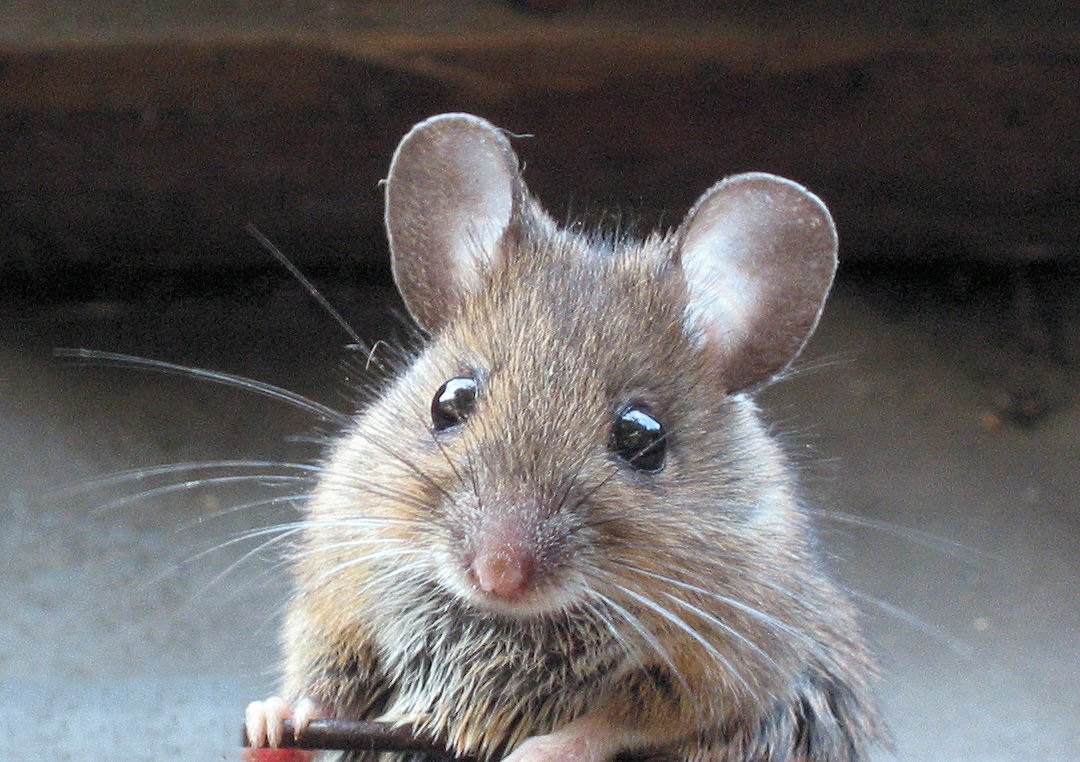Mus musculus: Difference between revisions
No edit summary |
No edit summary |
||
| Line 1: | Line 1: | ||
[[Image:Mouse.jpg|thumb|right]] | [[Image:Mouse.jpg|thumb|right|Mouse.jpg]] | ||
''Mus musculus'' is the scientific name for a mouse.'' Mus musculus'' are commonly used as [[Model organisms|model organisms]] in research labs, as compared to other model organisms, the mouse is the closest relative to humans and therefore opens many possibilities to studying things such as human diseases <ref>Web page (2004) The wellcome Trust: The Human Genome fckLR'Model organisms: The mouse' By Richard Twyman fckLRfckLRhttp://genome.wellcome.ac.uk/doc_wtd020804.html last assessed: 25/11/2014</ref>. | ''Mus musculus'' is the scientific name for a mouse.'' Mus musculus'' are commonly used as [[Model organisms|model organisms]] in research labs, as compared to other model organisms, the mouse is the closest relative to humans and therefore opens many possibilities to studying things such as human diseases <ref>Web page (2004) The wellcome Trust: The Human Genome fckLR'Model organisms: The mouse' By Richard Twyman fckLRfckLRhttp://genome.wellcome.ac.uk/doc_wtd020804.html last assessed: 25/11/2014</ref>. | ||
Revision as of 18:06, 2 December 2015

Mus musculus is the scientific name for a mouse. Mus musculus are commonly used as model organisms in research labs, as compared to other model organisms, the mouse is the closest relative to humans and therefore opens many possibilities to studying things such as human diseases [1].
The Mus musculus genome was sequenced in 2002 and it was found that many of their genes have a human counterpart, which can be experimented with, creating mutations in mice which mirror human diseases [2] Mice have also been used often in research to create 'transgenic mouse' by inserting foreign DNA into mice embryo's [3].
Other advantages of mice as a model include: short generation times, fast life span (compared to humans), readily available, generally easy to maintain, allows manageable costs,space and time to be used [4].
References
- ↑ Web page (2004) The wellcome Trust: The Human Genome fckLR'Model organisms: The mouse' By Richard Twyman fckLRfckLRhttp://genome.wellcome.ac.uk/doc_wtd020804.html last assessed: 25/11/2014
- ↑ Web Page: The wellcome Trust: The Human Genome 'Why the mouse?' http://genome.wellcome.ac.uk/doc_WTD023552.html last assessed: 25/11/2014
- ↑ Web Page: The wellcome Trust: The Human Genome 'Why the mouse?' http://genome.wellcome.ac.uk/doc_WTD023552.html last assessed: 25/11/2014
- ↑ Web Page: The Jackson Laboratory fckLR'Advantages of the mouse as a model organism'http://research.jax.org/mousegenetics/advantages/advantages-of-mouse.htmlfckLRlast assessed: 25/11/2014